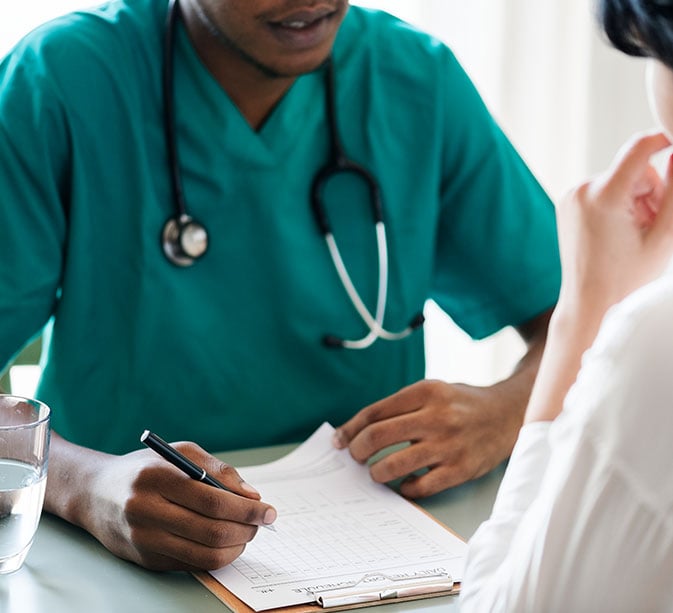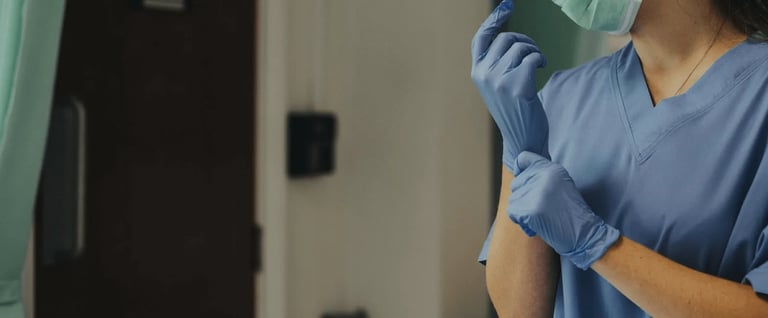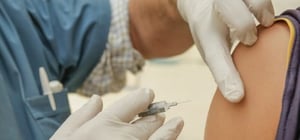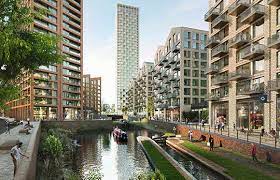One Health Group plc (AQSE:OHGR) Chief Executive Officer Adam Binns caught up with DirectorsTalk for an exclusive interview to discuss factors shaping revenue growth, NHS tariff, planned surgical hub, market competitiveness, public awareness of patient choice, capital allocation and areas of investment for continued growth.
Q1: One Health Group’s revenue grew by over 20% in the first half of this year, largely due to increased patient numbers and additional NHS surgeons joining. Could you elaborate on how these factors are shaping your revenue projections for the remainder of FY25 and beyond?
A1: I think it’s worth summarising by saying we’re very fortunate we’ve got a really strong, committed workforce and some excellent senior management, and the results of that combined package is we’ve made tremendous progress building on the momentum generated in H2 last year.
More importantly, we’ve continued to build on the record demand for our services, which were generated primarily by the pandemic and the impact on the NHS waiting list.
In terms of significant initiatives in the last certainly 12 months up to this half year, we’ve significantly expanded our geographic reach of our outreach clinic network. We’ve opened in new locations, including Warwickshire, which is a very recent one, and when we’ve opened these clinics, we’ve seen significant demand very, very quickly, which demonstrates that unmet demand by the NHS generally.
It’s interesting as well, because there has always been a perception in the sector that patients won’t travel for treatment, they prefer to go to the local trust but what we found increasingly is when we open an outreach clinic, and because we take the consultant to the patient, they don’t have to travel, we’ve seen significant demand. Because only 40% of those patients then require inpatient procedure, we find there’s no resistance to travel for that inpatient procedure, given they’re often jumping the list compared to NHS by months, there’s a strong demand across the board.
On the consultant bit, I think it’s interesting to reflect as well, because going back historically with One Health, we’ve always chased more consultants to get them to join the group. That’s absolutely reversed now, I think down to the success of the business and the fact we’re now in a growing geographic area, we’re increasingly approached by consultants to join the group looking to provide their services to us.
In terms of the general overview, I think, as mentioned, the trading update performance is ahead of expectations, and indeed the previous external forecast. We’re confident at the moment things will continue, there’s nothing we see negative in the next six months and in fact, in many ways, the budget announcement, which includes additional funding to support waiting list reductions can only be a good thing.
Q2: You mentioned that the NHS junior doctors pay settlement and the related NHS tariff adjustments are expected to benefit the company’s revenue. Could you explain how this change is anticipated to affect the financial performance and operations in the coming year?
A2: It’s quite a complex one, but I’ll run through how that works.
So, to give Labour credit, following the election, they were very quickly to resolve the long running junior doctors dispute to good effect.
What this means is when the pay increase was confirmed and agreed, this was a knock on effect to the cost of the trust’s operating costs through labour charges. The way that’s recovered is that the funding mechanism upon which we’re paid, that being the national tariff, that’s increases to reflect the increase in costs of labour. Now, all independent sectors providers, including us, benefit from charging against that tariff, which will increase with immediate effect, it was the 1st of September it changed.
Also importantly, the application of the labour increase goes back to the 1st of April and therefore so do the charges. So with effect 1st of September, our price has effectively been increased by the proposed increase in tariff but importantly as well, we can then charge arrears for the previous six months of activity.
Those numbers or that benefit isn’t reflected in H1 results and we’ll be seen in H2, but that will give us a fairly healthy uplift in revenue, most of which goes straight to bottom line because it’s a price increase.
That’s how that benefits the business and all independent providers and indeed all NHS trusts, the whole pricing structure is increased by the cost of the labour increase.
It’s also worth picking up on the fact that I know it’s very early yet, but the budget announced an increase in the employers’ National Insurance contributions, which has been much talked about in the press. You’re probably aware that the independent sector providers will suffer that charge, whereas public sector bodies don’t so for example, GPs, care homes and our business will suffer that cost. We’re already engaging with NHS regarding the tariff for next year, that being ‘25-‘26, to reflect that increase and that we are being listened to, which is positive.
So, I think we look forward with confidence that cost increases generally, and certainly government-imposed cost increases, will be reflected in price increases upon which we bill.
Q3: With the positive pre-application consultation feedback on your planned surgical hub, what further steps are required before construction begins? Also, what impacts do you anticipate this hub will have on your operation capacity and local healthcare services?
A3: So, as I’ve been trading update, we intend to submit full planning at the end of November or December, subject to that being approved, and we are confident given the pre-app feedback was very positive from the local planning department, we intend having a spade in the ground in the early calendar year. So, post-December into new calendar year, we’ll be getting a spade in the ground.
In terms of the benefit of that to the group, it’s very approximately a £6 million revenue uplift, around 25% of current revenue uplift. That’s a normal week cycle, we have the option to increase such if we need to, if there’s demand greater than expected or anticipated.
It’s also really important to highlight this is new activity, not moving activity into from existing providers, there’ll be no change to existing activity with independent providers, which there are now nine. This will be new demand in new areas where we have tested without connected and see significant patient demand so it’s a step change in revenue for the group.
It’s also worth highlighting that the areas we’re focusing on, this being the first hub we’ll develop, are areas where there are no NHS or independent providers in a good area, so it’s an untested area where patients have no local support from inpatient provision. We’ll open outreach clinics and then we’ll feed the inpatient hub once we get it open up and running.
So, around £6 million revenue, around 25% uplifting current activity per hub, and this will hopefully be the first of several.
Q4: Now, the trading update highlights a strong pipeline of new surgeons, additional hospital partnerships and the possibility of an AIM listing. How do you see these strategic moves positioning the group for sustained growth and market competitiveness?
A4: In 20 days now, we’ll have been listed for two years, and as reflected in our business ethos, it’s very important to us as a business that we come in to continuously look to improve and develop the business, now in its 20th year from every angle in every respect. This includes ensuring we maximise shareholder value through capital growth, liquidity and dividend returns.
You may have seen we’ve recently changed broker as well to the newly merged Panmure Liberum, and we remain open minded around plans for the future to meet our investment strategy.
So, at the moment, we’re looking at several different options, AIM is one of them, as we mentioned in the trading update.
Q5: As the group gains more patient referrals through the NHS e-referral system, how is the company working to build public awareness of patient choice and its benefits?
A5: That’s a good question. Before the election, before the manifestos building up the election, it was a long hard slog trying to make patients aware of this almost best kept secret in the NHS. The fact they have the choice to choose their provider of care and that’s been the case for almost a decade.
So, we’ve always worked hard on that in the background, but certainly through the manifesto developments and certainly post-election with Labour, they’ve done the job for us. They’ve promoted patient choice more and made more patients aware they can choose so we’re seeing a change in patients thinking when they approach GPs now, more of them go informed, knowing they don’t have to go to the NHS. They can choose independent advice like One Health.
In support of this from a local perspective, we work really, really hard on customer service and we work hard to make sure that any patient that does go through our business gets a really good experience. There’s something called the Friends and Family Test, which is an NHS measure of the number of patients that would recommend or highly recommend your services and I take great pride as do the wider team on the fact that in the last two months cumulatively, we’ve hit 96% on that score, which is again, another all-time record.
So, not only do we see patients faster and free and locally, but they’re also having a really good experience with us and really good service and getting back to good health. In terms of the wider picture and building the economy, we don’t need people waiting for hips and knee replacements that could be working and generating taxes for the government to grow the UK. It’s a big knock-on macro effect.
This word of mouth undoubtedly helps us and we try hard as well to help patients to refer themselves so on our website, for example, there’s an option right on the front page where patients can select to refer themselves to us. So, they can go to the GP-informed, already pre-referred, and our team will pick up that referral and help them through that process because it can be quite challenging. GPs are busy people and don’t often have the time to sit down and explain options at the end of the consultation so we’ll do everything we can to help the system to do a better job of promoting that choice.
I guess one of the challenges has always been targeting a patient at the right time. You don’t always need a hip or knee replacement, and it’s very, very different to most other businesses’ general marketing strategies. We have to hit a patient at the right time when they’ve got a need so we continue to promote that choice through our website and social media channels. We developed Facebook groups recently where patients come together on Facebook and talk about this to pass down to future patients, talk about their experience, what to expect and how it all works.
So, that’s given us some interesting insight into where patients are thinking.
Q6: Are there any specific initiatives that have helped the group stand out as a trusted alternative for patients?
A6: I think the specific one has been, ironically, the NHS launched a media campaign pre-Christmas and used our strap line that’s been in place for over 10 years, which made me smile, which is quite widely used by us generally.
So, I think we continue to work hard, but into specific initiatives. We’ve done lots of low-level media campaigns, we’ve targeted specific areas where we now reach clinics to good effect but importantly, it’s about making sure we make sure GPs are aware too.
We increasingly work with GPs and GP teams to make sure they know we are there and we can help them because ultimately, we’re all trying to achieve the same goal, that being to get patients back to good health. So, it’s important we work together.
Q7: With cash reserves reaching £4.9 million, what are your current priorities for capital allocation?
A7: The business has always been an asset-light business, we have very little debt, the only debt we have, in fact, is a loan against our offices, which is relatively small in terms of the loan-to-value.
So, being asset-light, we have a very high cash-to-profit ratio and indeed, our strong performance in H1 has buoyed those cash reserves and given us a significant uplift in cash.
We’ve always been consistent with our progressive dividend policy, which will continue, and we’ll announce our interim dividend, in fact, in a couple of weeks with our interim update. I think that’s due third week in November.
So given these strong cash reserves supported by having just refinanced the business with Barclays, Barclays are a very proactive UK healthcare provider, so there’s a lot of interest there in terms of additional funding, specifically.
We’re now very well placed to focus on the development of our first surgical hub, as we just talked about, which we expect to start building in the new year.
Q8: You mentioned the progressive dividend policy there, but are there specific areas of investment that you believe will be pivotal for One Health Group’s continued growth?
A8: That’s going to be the hub, quite simply. All cash reserves and debt will be focused around that hub, starting in the new year now and that will deliver that £6 million uplift in revenue and associated EBITDA, obviously. Ongoing on from that, any future cash generated goes over to the next hub and so on and so forth.
So, this will be the first of several hubs, this will be to prove the concept and from there, we’ll be rolling them out at a fairly ambitious rate around 12-18 months at each over the next, certainly 5-6 years in our strategic plan.









































